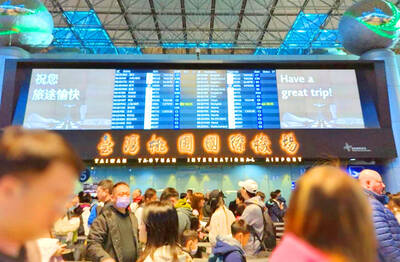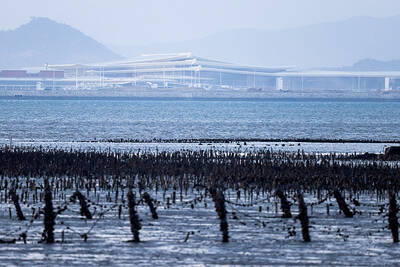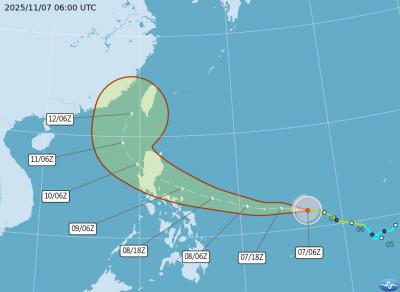Many of the military experts who spent years clearing tens of thousands of landmines from the island of Kinmen may have left the outlying county, but their contribution will be remembered in a new exhibition center that opened this week.
Located within a military base on Kinmen’s main island, the center was unveiled on Monday to mark the removal of the landmines — sowed decades ago to thwart a potential Chinese invasion — by the army’s demining division in Kinmen.
Now that the military’s largest demining operation has come to a close, the division that established in 2007 was disbanded as of Tuesday, though about two dozen professional deminers remain in Kinmen as part of the new demining platoon to deal with any future discoveries of unexploded ordnance.
To share their important work with the public, they have left behind some of their protective gear, equipment and devices used to detect and remove mines.
Outside the exhibition hall is a mock removal crew — dressed in trademark orange uniform and with protective gear — showing visitors how the delicate procedure of removing mines is carried out.
Mines are a part of Kinmen’s history, considered the front line of defense for Taiwan throughout the second half of the 20th century due to its proximity to China’s Fujian Province.
Kinmen Defense Command said that the newly opened center allows visitors to get a peek into the challenges of removing mines as well as why they were deployed.
However, since the exhibition center is on a military base, only Taiwanese nationals are allowed entry. Anyone wanting to visit must first file an application with the Kinmen County Government one week in advance and be subject to an identity check, a defense official said.
The first group of visitors is expected later this month.
The center’s launch follows the establishment of a similar park located on the islet of Lieyu (烈嶼), known as Little Kinmen.
Managed by the Lieyu Township Office, the park includes a tunnel that features inactive mines and warning signs from different countries, including Cambodia, that have been used to inform visitors of the area’s dangerous past.
There are no restrictions on who can visit.
The military planted extensive minefields along the coast of Kinmen and Matsu in the 1950s and 1960s when tensions with China were at a high point.
As a result about 95,800 landmines and unexploded ordnance have been removed from Kinmen over the past several years.
Known for decades as a heavily fortified anti-communist bastion, Kinmen has succeeded in turning war-torn battlefields into tourist attractions, including several military tunnels and museums in memory of significant battles against China.

Three Taiwanese airlines have prohibited passengers from packing Bluetooth earbuds and their charger cases in checked luggage. EVA Air and Uni Air said that Bluetooth earbuds and charger cases are categorized as portable electronic devices, which should be switched off if they are placed in checked luggage based on international aviation safety regulations. They must not be in standby or sleep mode. However, as charging would continue when earbuds are placed in the charger cases, which would contravene international aviation regulations, their cases must be carried as hand luggage, they said. Tigerair Taiwan said that earbud charger cases are equipped

Foreign travelers entering Taiwan on a short layover via Taiwan Taoyuan International Airport are receiving NT$600 gift vouchers from yesterday, the Tourism Administration said, adding that it hopes the incentive would boost tourism consumption at the airport. The program, which allows travelers holding non-Taiwan passports who enter the country during a layover of up to 24 hours to claim a voucher, aims to promote attractions at the airport, the agency said in a statement on Friday. To participate, travelers must sign up on the campaign Web site, the agency said. They can then present their passport and boarding pass for their connecting international

UNILATERAL MOVES: Officials have raised concerns that Beijing could try to exert economic control over Kinmen in a key development plan next year The Civil Aviation Administration (CAA) yesterday said that China has so far failed to provide any information about a new airport expected to open next year that is less than 10km from a Taiwanese airport, raising flight safety concerns. Xiamen Xiangan International Airport is only about 3km at its closest point from the islands in Kinmen County — the scene of on-off fighting during the Cold War — and construction work can be seen and heard clearly from the Taiwan side. In a written statement sent to Reuters, the CAA said that airports close to each other need detailed advanced

Tropical Storm Fung-Wong would likely strengthen into a typhoon later today as it continues moving westward across the Pacific before heading in Taiwan’s direction next week, the Central Weather Administration (CWA) said. As of 8am, Fung-Wong was about 2,190km east-southeast of Cape Oluanpi (鵝鑾鼻), Taiwan’s southernmost point, moving westward at 25kph and possibly accelerating to 31kph, CWA data showed. The tropical storm is currently over waters east of the Philippines and still far from Taiwan, CWA forecaster Tseng Chao-cheng (曾昭誠) said, adding that it could likely strengthen into a typhoon later in the day. It is forecast to reach the South China Sea